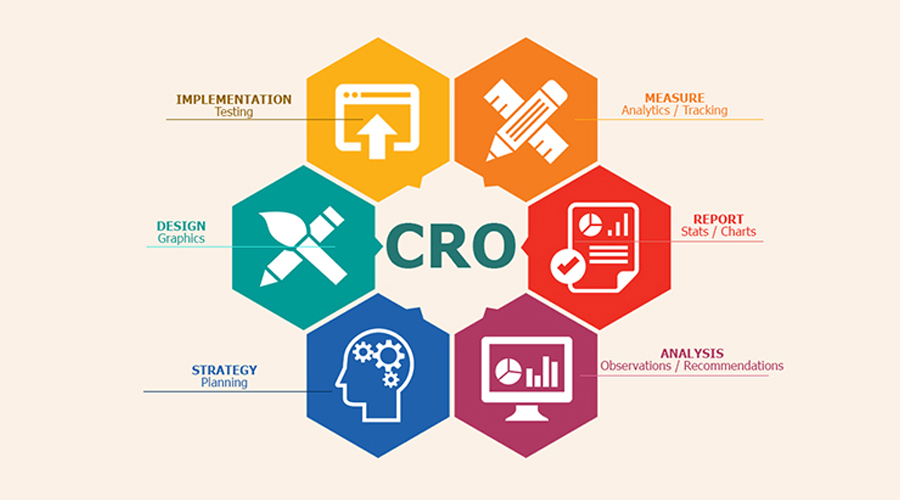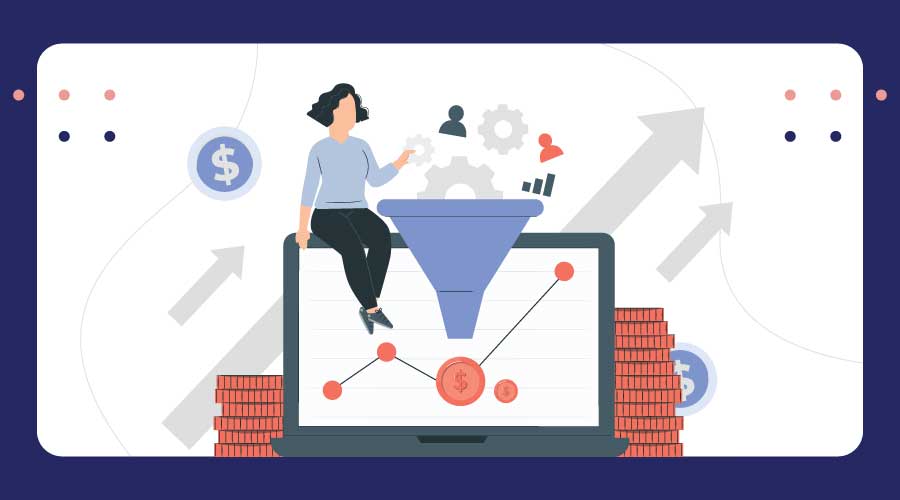The ultimate objective of conversion rate optimization (CRO) is to maximize the percentage of people visiting your website who take action, thereby allowing you to reach more customers without upping your advertising budget. Through CRO tactics such as optimizing sponsored search ads and landing pages, and modernizing the design of your webpages, you can enhance the likelihood that those website visits will turn into conversions. It doesn’t matter what sector you operate in or what kind of business set-up you have – everyone strives to make their conversion rate higher! Conversion rates vary significantly, but nobody wants theirs to remain stagnated.
What is Conversion Rate Optimization?
The effectiveness of a website is measured by its conversion rate, which indicates the percentage of visitors who follow through with their intentions and complete a desired action. This metric is especially important for tasks such as filling out forms, subscribing to services, or making purchases. To achieve higher conversion rates, your website should be carefully crafted to appeal to your target audience. If not, there may be various factors, such as design or performance issues, that are causing a decrease in conversions. There are many reasons why conversion rates may drop, including slow loading times, poorly designed forms, or a failure to effectively communicate the benefits of an offer.
How to Check Website Performance Data?
To determine your website’s conversion rate, it’s important to first understand what a conversion means. So, here’s how to check website performance. Let’s say you want to track the number of people who sign up for your newsletter, which appears on every page of your website. To calculate the conversion rate, simply divide the total number of newsletter sign-ups by the total number of website visitors, and then multiply that number by 100. For instance, if there were 500 newsletter sign-ups and 20,000 visitors to your website over a three-month period, your conversion rate would be 2.5%. To get a more accurate picture of your conversion rate, you can get the help of a professional like Pammsoft for a better understanding of the topic. For example, if you want to know the conversion rate for your ebook offer, divide the total number of ebook downloads by the total number of visitors to the ebook page.
Also, read- Types of Web Design Hacks to Increase Customer Retention
How to Improve Website Performance By CRO?
If you’re looking to give your website a boost, take advantage of these data-certified tricks that can help you maximize your conversion rate and bolster your bottom line. Here’s how to improve website performance,

Establish Your Site’s Intentions
Prior to embarking on your website performance enhancement endeavor, it is crucial to clearly define the goals for your website that you intend to evaluate through conversion optimization. These objectives can encompass any deliberate action carried out by visitors to your site. Once established, it is important to monitor user behavior with respect to these defined goals. Consider the various conversion targets that you may potentially establish for your web pages.
- Page visits
- Form submits
- Click on links
- Clicks on elements
- Custom conversions
Uncovering Visitor Habits
Looking for an answer on how to improve website performance? In terms of CRO, it is recommended to reject any assumptions and instead rely on verifiable data points for informed decision-making. By regularly monitoring and analyzing data, you can gather the necessary intelligence to make intelligent choices. Are you trying to gain in-depth insights into your website’s visitors?
Need to find a way how to improve website performance? If so, here are some key metrics that you’ll need to pay attention to:
- User behavior details on landing pages
- Bounce and abandonment rates for web pages and forms
- Click-through rates of adverts and marketing campaigns
- Information on return customers and average order values
- Customer feedback such as Net Promoter Scores (NPS)
After gathering your numerical data, utilize it to create a user persona – a portrayal of the perfect target and users. This summary should encompass all crucial information about the potential customers and individuals who use your product or service – showcasing their likes, dislikes, goals, obstacles, and frustrations. By merging factual data with an elaborate representation of your aimed customer, you can conduct experiments that help you boost website performance with confidence. By trying out various tactics, you can precisely determine what yields positive results and what doesn’t.
Assessing the Competition

To gain an advantage over your competitors, it is crucial to understand their strengths and weaknesses. Utilize your own Unique Selling Points (USPs) and highlight the areas where you excel in comparison to your rivals to establish a clear edge. When customers are considering a purchase, they are likely to compare their options. Your website’s performance optimization strategies and product offerings should reflect this knowledge. Analyzing your competitors enables you to see what potential customers may encounter, allowing you to stay competitive and become the best choice available.
Examine the Efficiency of Your Conversion Pathway
To ensure that you effectively fix any issues on your website, it is important to first understand the journey of your regular visitors and the conversion process they go through. This will help you identify where they might be getting stuck or leaving, and give you insight into why. For eCommerce stores, optimizing the checkout process can reduce cart abandonment and increase conversion rates. Amazon is a prime example of this, with their one-click checkout significantly improving their turnover rate. To optimize your own conversion funnels, you need to evaluate the different steps potential customers take on your site that could lead to a conversion. Determine which steps are working well and which are causing high abandonment rates. With this information, you can focus on improving the areas that need it most and implement sustainable initiatives to boost your overall conversion rate.
Final Thoughts
Maximizing your conversion rate is key to boosting the ROI of your marketing endeavors. However, achieving this goal can be challenging. Converting more visitors translates to seizing every opportunity that comes your way, leading to significant revenue growth. To get started, implement the strategies we have recommended. Nonetheless, keep in mind that what works for others may not work for you. Stay alert for emerging trends and determine what resonates with your target audience. You may also contact Pammsoft professionals for assistance.
